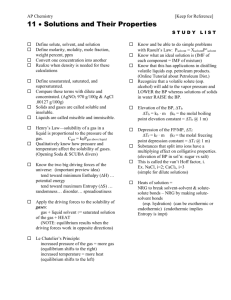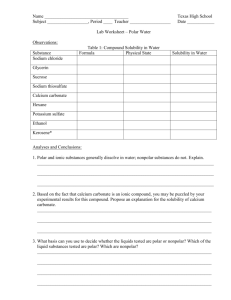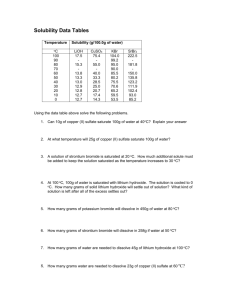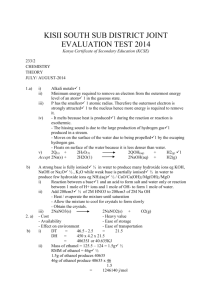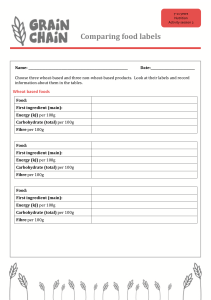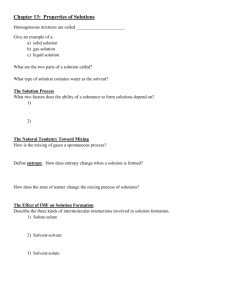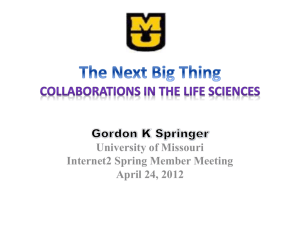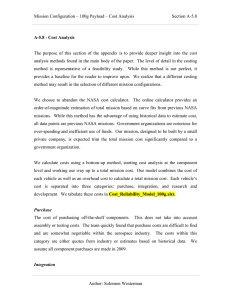8_Answers to Ch_13
advertisement
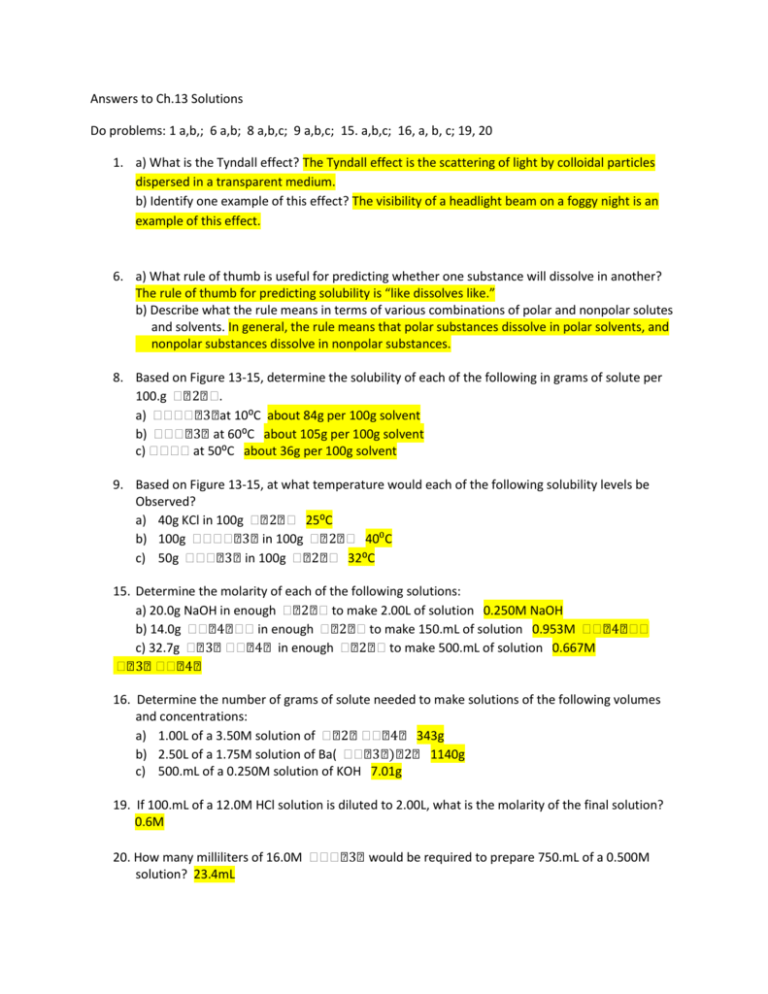
Answers to Ch.13 Solutions Do problems: 1 a,b,; 6 a,b; 8 a,b,c; 9 a,b,c; 15. a,b,c; 16, a, b, c; 19, 20 1. a) What is the Tyndall effect? The Tyndall effect is the scattering of light by colloidal particles dispersed in a transparent medium. b) Identify one example of this effect? The visibility of a headlight beam on a foggy night is an example of this effect. 6. a) What rule of thumb is useful for predicting whether one substance will dissolve in another? The rule of thumb for predicting solubility is “like dissolves like.” b) Describe what the rule means in terms of various combinations of polar and nonpolar solutes and solvents. In general, the rule means that polar substances dissolve in polar solvents, and nonpolar substances dissolve in nonpolar substances. 8. Based on Figure 13-15, determine the solubility of each of the following in grams of solute per 100.g 𝐻�2�𝐻. a) 𝐻𝐻𝐻𝐻�3�at 10⁰C about 84g per 100g solvent b) 𝐻𝐻𝐻�3� at 60⁰C about 105g per 100g solvent c) 𝐻𝐻𝐻𝐻 at 50⁰C about 36g per 100g solvent 9. Based on Figure 13-15, at what temperature would each of the following solubility levels be Observed? a) 40g KCl in 100g 𝐻�2�𝐻 25⁰C b) 100g 𝐻𝐻𝐻𝐻�3� in 100g 𝐻�2�𝐻 40⁰C c) 50g 𝐻𝐻𝐻�3� in 100g 𝐻�2�𝐻 32⁰C 15. Determine the molarity of each of the following solutions: a) 20.0g NaOH in enough 𝐻�2�𝐻 to make 2.00L of solution 0.250M NaOH b) 14.0g 𝐻𝐻�4�𝐻𝐻 in enough 𝐻�2�𝐻 to make 150.mL of solution 0.953M 𝐻𝐻�4�𝐻𝐻 c) 32.7g 𝐻�3� 𝐻𝐻�4� in enough 𝐻�2�𝐻 to make 500.mL of solution 0.667M 𝐻�3� 𝐻𝐻�4� 16. Determine the number of grams of solute needed to make solutions of the following volumes and concentrations: a) 1.00L of a 3.50M solution of 𝐻�2� 𝐻𝐻�4� 343g b) 2.50L of a 1.75M solution of Ba( 𝐻𝐻�3�)�2� 1140g c) 500.mL of a 0.250M solution of KOH 7.01g 19. If 100.mL of a 12.0M HCl solution is diluted to 2.00L, what is the molarity of the final solution? 0.6M 20. How many milliliters of 16.0M 𝐻𝐻𝐻�3� would be required to prepare 750.mL of a 0.500M solution? 23.4mL
